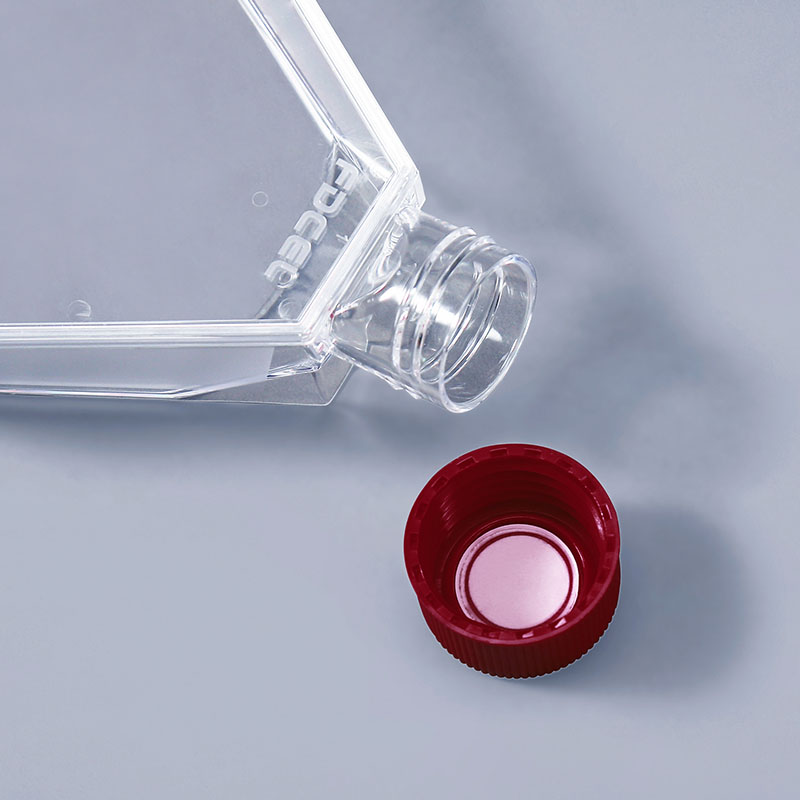Abstract
Genome editing is commonly used in biomedical research. Among the genome editing tools, zinc finger nucleases (ZFNs) are smaller in size than transcription activator-like effector nucleases (TALENs) and CRISPR-Cas9. Therefore, ZFNs are easily packed into a viral vector with limited cargo space. However, ZFNs also consist of left and right monomers, which both need to be expressed in the target cells. When each monomer is expressed separately, two expression cassettes are required, thus increasing the size of the DNA. This is a disadvantage for a viral vector with limited cargo space. We herein showed that T2A-coupled ZF-ND1 monomers were co-expressed from a single expression cassette and that the corresponding ZF-ND1s efficiently cleaved the target DNA sequences. Furthermore, the total amount of transfected plasmid DNA was reduced by half, and genome editing efficiency was equivalent to that of two separate ZF-ND1 monomers. This study provides a promising framework for the development of ZFN applications.
Keywords:
genome editing; ZFN; 2A peptide
1. Introduction
Genome editing tools are widely used for biomedical research. Among them, CRISPR-Cas9 is the most frequently used worldwide [1]. However, CRISPR-Cas9 patents are active until 2033 [2,3], and thus, high patent royalties are required for industry applications. In contrast, the patents for zinc finger nucleases (ZFNs) ended in 2020 [4]. Moreover, a previous study demonstrated that the sizes of assembled ZFs (0.3–0.6 kbp) were smaller than those of assembled transcription activator-like effectors (encoded in 1.7–2 kbp) or SpCas9 (4.1 kbp) [5]. Due to their sizes, the packing of ZFNs into the limited cargo space (~4.6 kbp) of adeno-associated virus (AAV) vectors is easily achieved [6,7]. Therefore, AAV/ZFN vectors are a powerful platform for the in vivo delivery of gene therapies, and the application of ZFNs in translational research has great potential.
ZFNs comprise a DNA-binding moiety and catalytic moiety, with assembled ZF proteins functioning as the former, and ND1 heterodimer nucleases (DDD/RRR) [8] as the latter. The DNA cleavage activity of a ND1 heterodimer nuclease (DDD/RRR) was previously shown to be higher than that of a FokI heterodimer nuclease (ELD/KKR) [8]. We successfully developed various ZF-ND1s by linking the ND1 heterodimer nuclease (DDD/RRR) to assembled ZF proteins [9].
ZF-ND1s consist of two monomers, a left ZF-ND1RRR monomer and a right ZF-ND1DDD monomer. In a previous study [9], each monomer was expressed from a single expression cassette, and thus, two expression cassettes were required. Therefore, a large size of DNA was needed for expressing both monomers, which was disadvantageous for using an AAV vector. We hypothesized that two monomers could be expressed from a single expression cassette using a 2A peptide.
A 2A peptide has a conserved DxExNPGP motif that promotes ribosomal skipping upon translation [10]. There are four kinds of 2A peptides: P2A, T2A, E2A, and F2A [11,12]. Among them, P2A and T2A are the most efficient in mammalian cells [10,13,14]. Therefore, two ZFN monomers should be coupled with a P2A or T2A peptide. In the case of ZF-FokI [15], T2A has already been used for the coupling of two ZF-FokI monomers [16,17,18].
In the present study, we developed T2A-coupled ZF-ND1 monomers, which successfully cleaved the target DNA with the same efficiency as two separate monomers. Furthermore, the total amount of transfected plasmid DNA was reduced by half, and the genome editing efficiency was equivalent to that achieved using separate monomers.
The article is reprinted from MDPI, original link:https://www.mdpi.com/1422-0067/26/15/7602

2L TC treated cell roller bottles

The FAI climbed 5.9 percent year-on-year in the first 11 months of 2018, quickening from the 5.7-percent growth in Jan-Oct, the National Bureau of Statistics (NBS) said Friday in an online statement.
The key indicator of investment, dubbed a major growth driver, hit the bottom in August and has since started to rebound steadily.
In the face of emerging economic challenges home and abroad, China has stepped up efforts to stabilize investment, in particular rolling out measures to motivate private investors and channel funds into infrastructure.
Friday's data showed private investment, accounting for more than 60 percent of the total FAI, expanded by a brisk 8.7 percent.
NBS spokesperson Mao Shengyong said funds into weak economic links registered rapid increases as investment in environmental protection and agriculture jumped 42 percent and 12.5 percent respectively, much faster than the average.
In breakdown, investment in high-tech and equipment manufacturing remained vigorous with 16.1-percent and 11.6-percent increases respectively in the first 11 months. Infrastructure investment gained 3.7 percent, staying flat. Investment in property development rose 9.7 percent, also unchanged.
 English
English


















































